The first lesson I learned while working in the healthcare industry was this: Expect change. Every year there was guaranteed to be a policy or procedural change that required change management, which led to the second lesson I learned: Figure out how to make the change last.
Organizations that successfully navigate change management have also made culture shifts to ensure lasting change.
There are 4 culture shifts that a nonprofit organization needs to make to maintain change management.
1. Adopt a culture that values feedback.
Many of us have been in the position of loving an idea on paper but later realizing it doesn’t work so well in practice. The initial idea on paper may not capture nuances of day-to-day work rhythms, or it may collide with current processes or services. The staff who may be working these day-to-day tasks may not be key decision-makers, which could create a communication gap.
Maintaining a feedback loop to ensure that you as a leader know what is happening at pavement level will do three things:
- Creates confidence in your staff that they are a part of the change process.
- Provides a sense of ownership in making the change work.
- Signals any needs to make future adjustments during planning phases.
Remember: Obtaining feedback from your staff is not the same as using their feedback. Have you ever been told by someone that they value what you say, but then take actions that prove otherwise? At some point you disconnect or disengage, and in doing so, distrust seeps in and can create a toxic workplace culture. Regardless of the feedback, make it a practice to acknowledge it, address it, and when appropriate, implement it.
2. Adopt a culture that supports flexibility.
Flexibility and structure are not mutually exclusive. A nonprofit with a culture of flexibility embraces “new;” a new way of doing, thinking, and being, without compromising the organizations mission. When change has been initiated there must be flexibility in how the change is carried out.
How does a culture of flexibility look? Here’s some examples:
- The ability to scrap a new design and start over when it’s obvious that it doesn’t meet an objective.
- Relinquishing control to the best person for the job when it was not initially obvious that they would be the best choice.
- Inviting creativity. Creativity fuels flexibility!
3. Adopt a culture that values training.
A major pitfall for maintaining changes in an organization is a lack of training. Many organizations tend to provide a quick overview of how things are supposed to work without a proper system to evaluate their staff’s understanding of the proposed changes.
Training as demonstration without evaluation is only an overview. Without this, people will revert to what is easiest, most familiar, or most comfortable to them. There is no accountability. Regardless of whether a change will require a lot of training or not, it’s a good practice to take time to identify any training needs.
Ask these questions to determine when training is needed:
- Are we asking staff to do something they’ve never done?
- Are we expecting staff to figure out anything on their own? If so, can our current staff manage figuring things out on their own?
To create a lasting change within your organization, a culture that values training with evaluation will develop more proficient staff and maintain change.
4. Adopt a culture of accountability.
Don’t have a heavy hand without a soft heart. This is one of the fastest ways to lose great employees. Holding staff accountable for work that they have not been prepared to do is downright unfair.
Recently I was talking to a friend who disclosed she was leaving her job. Her response to me asking, “Why?”, was this: “I didn’t get hardly any training on what they were asking me to do. And then I was expected to jump right in to my new duties without having hardly any time to practice and get familiar with it. It was too stressful.” Not only did she feel as though she wasn’t adequately prepared, but her boss also berated her on her performance in front of her co-workers.
When it comes to having a culture of accountability it only serves the company well when there are two things present:
- Clear expectations.
- Adequate training.
Without these two things, people will feel as though they can’t excel.
When people feel as though they can’t excel, one of two things typically happen: They quit, or perhaps even worse, they stay, storing up resentment, performing at the bare minimum level. When an organization has clear expectations and adequate training, accountability helps to make change lasting.
An accountability system that maintains change creates the following:
- Involvement. It promotes the idea that everyone’s work matters and is an important contribution to the organization. Everyone must do their part.
- Commitment. It undergirds the notion of how important the change is to the organization. The change is important enough to measure and monitor its performance.
- Excellence. It emphasizes that how the goal is met, matters. The point of change is to make the organization stronger, not weaker!
Are you currently making decisions about what changes need to be made within your nonprofit organization? If so, take the time to evaluate whether your culture will be able to maintain the change that is desired. It is beyond frustrating as a leader to invest time, energy, and money to make changes that can’t be maintained to meet the objectives. Take heart in knowing that with a little effort and tweaking your culture, it can be done!
Miriam Dicks, CCMP
Miriam P. Dicks is the CEO and Chief Strategist of 180 Management Group, an operations consulting firm specializing in operational strategy and design for non-profit organizations. She is an operations leader with proven experience in transforming organizations to achieve optimal operational performance. Her passion for operations is fueled by her belief that any organization can operate in excellence with the right tools for change.New Paragraph



